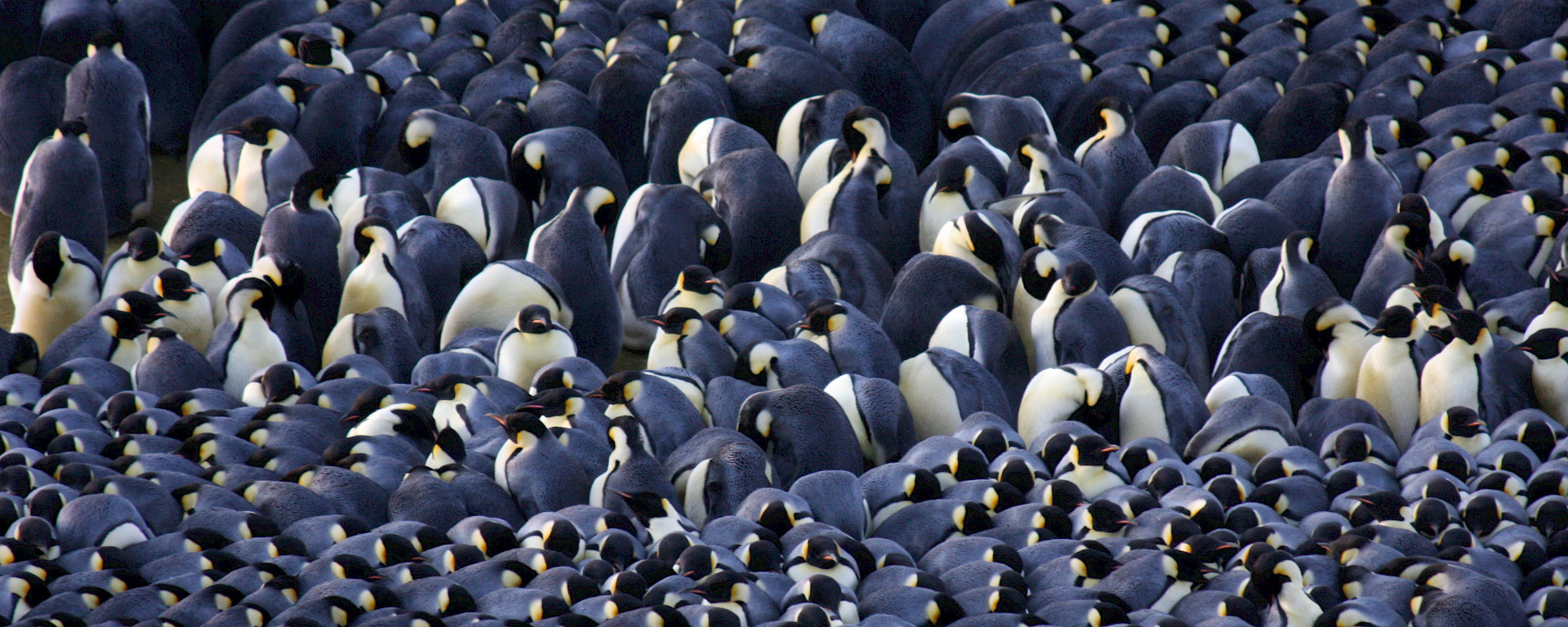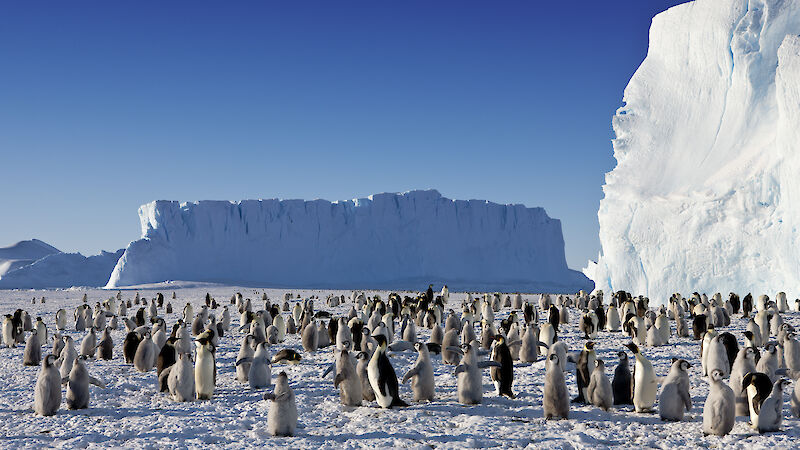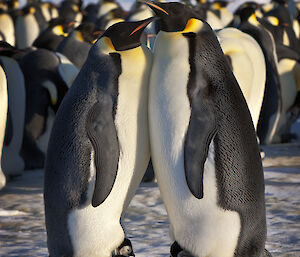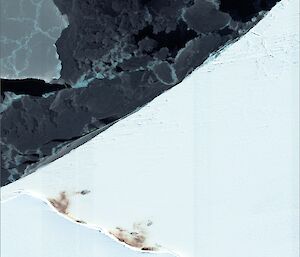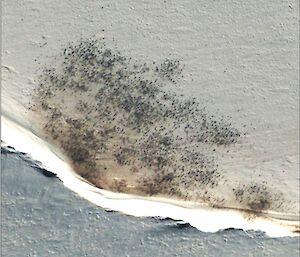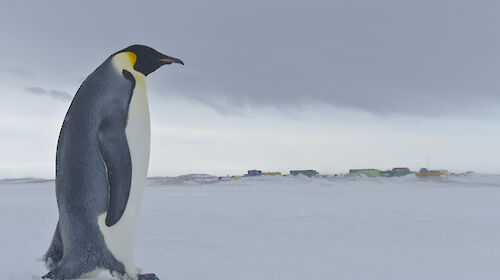Reporting this week in the journal PLoS ONE, an international team of scientists, including Australian Antarctic Division biologist Dr Barbara Wienecke, describe how they used Very High Resolution (VHR) satellite images to estimate the number of penguins at each colony around the coastline of Antarctica.
Using a technique known as pan-sharpening to increase the resolution of the satellite imagery, the scientists were able to differentiate between birds, ice, shadow and penguin poo (guano).
They then used ground counts and aerial photography to calibrate the analysis. These birds breed in areas that are very difficult to study because they are remote and often inaccessible with temperatures as low as −50°C.
Lead author and geographer Peter Fretwell at British Antarctic Survey (BAS) explained; “We are delighted to be able to locate and identify such a large number of emperor penguins. We counted 595,000 birds, which is almost double the previous estimates of 270,000 to 350,000 birds. This is the first comprehensive census of a species taken from space.”
On the ice, emperor penguins with their black and white plumage stand out against the snow and colonies are clearly visible on satellite imagery. This allowed the team to analyse 44 emperor penguin colonies around the coast of Antarctica, with seven previously unknown.
“The methods we used are an enormous step forward in Antarctic ecology because we can conduct research safely and efficiently with little environmental impact, and determine estimates of an entire penguin population,” said co-author Michelle LaRue a researcher at the University of Minnesota Polar Geospatial Centre.
“The implications of this study are far-reaching: we now have a cost-effective way to apply our methods to other poorly-understood species in the Antarctic, to strengthen on-going field research, and to provide accurate information for international conservation efforts.”
Australian Antarctic Division biologist Dr Barbara Wienecke, undertook ground counts of penguin colonies at three sites in East Antarctica to compare them with the numbers derived from the satellite imagery.
She said despite the large number of penguins identified in this research, it’s important to note that emperor colonies will be seriously affected by climate change.
“The populations of two large colonies have already significantly decreased in size, and one small one has all but disappeared and others are beginning to show signs of change,” Dr Wienecke said.
“We think that earlier spring warming is leading to loss of sea ice habitat for emperor penguins, making the northerly colonies more vulnerable to further climate change.”
BAS biologist Dr Phil Trathan, and co-author, noted, “An accurate continent-wide census that can be easily repeated on a regular basis will help us monitor more accurately the impacts of future change on this iconic species.”
This research is a collaboration between British Antarctic Survey, University of Minnesota/National Science Foundation, Scripps Institution of Oceanography and the Australian Antarctic Division.

